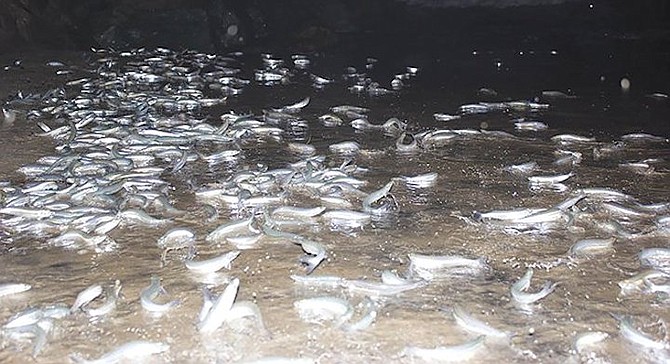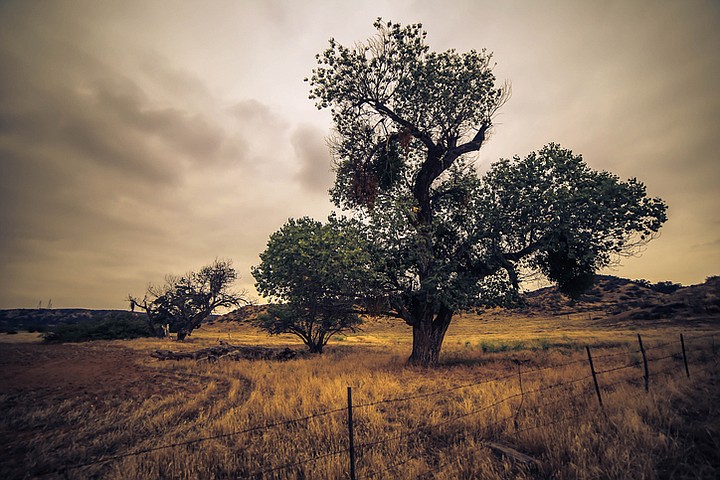 Facebook
Facebook
 X
X
 Instagram
Instagram
 TikTok
TikTok
 Youtube
Youtube

Grunion Runs are predicted to occur during the late evening hours (generally after 10 pm and before 1 am), following the nocturnal high tide, on April 17 and 18. The small, silvery grunion tend to spawn on wide, gently sloping beaches such as Silver Strand, Mission Beach, Pacific Beach, La Jolla Shores, and Del Mar. During the months of April and May, grunion are protected and may not be taken by fishers through any means. Open season for grunion starts in June, and from then until the end of summer the fish can be collected in reasonable numbers using the hands only (fishing license needed for persons 16 years of age and older). For more information, visit dfg.ca.gov/marine/grunion schedule.asp.

Fremont Cottonwoods along the San Diego River in Mission Gorge will show off their best iridescent green foliage later this month. The Old Mission Dam parking area on Father Junipero Serra Trail, off Mission Gorge Road (west of Santee), is a good place to begin a stroll on trails near the riverbed. But b careful — rattlesnakes may be out and about this time of year.

Desert Agaves, or century plants, are sending up their asparagus-like flower stalks on rocky hillsides throughout much of the Anza-Borrego Desert. On warm, sunny days the stalks may grow almost one foot per day (fast enough for you to notice the sharp leaf tips at the bud actually separating from one another). After the stalk reaches a height of 10-20 feet, clusters of waxy, yellow flowers appear, ready for pollination by bees and other insects. After blooming, the fleshy, dagger-like leaves at the base of the plant die (after a life of 10 or 20 years, not a century) and the stalk, bearing a crop of seeds, dries up as well.
April's Full Moon (exactly full at 11:55 am) is called a Pink Moon. In North America, April’s Pink Moon takes its name from a type of pink flower known as Phlox subulata—also called moss pink or moss phlox—that blooms in Spring. According to TimeandDate.com, other names for the April full moon include Sprouting Grass Moon, Fish Moon, Hare Moon, and Egg Moon. It is also known as the Paschal Moon because it is used to calculate the date for Easter.
The above comes from the Outdoors listings in the Reader compiled by Jerry Schad, author of Afoot & Afield in San Diego County. Schad died in 2011. Planet information from SkyandTelescope.org.


Grunion Runs are predicted to occur during the late evening hours (generally after 10 pm and before 1 am), following the nocturnal high tide, on April 17 and 18. The small, silvery grunion tend to spawn on wide, gently sloping beaches such as Silver Strand, Mission Beach, Pacific Beach, La Jolla Shores, and Del Mar. During the months of April and May, grunion are protected and may not be taken by fishers through any means. Open season for grunion starts in June, and from then until the end of summer the fish can be collected in reasonable numbers using the hands only (fishing license needed for persons 16 years of age and older). For more information, visit dfg.ca.gov/marine/grunion schedule.asp.

Fremont Cottonwoods along the San Diego River in Mission Gorge will show off their best iridescent green foliage later this month. The Old Mission Dam parking area on Father Junipero Serra Trail, off Mission Gorge Road (west of Santee), is a good place to begin a stroll on trails near the riverbed. But b careful — rattlesnakes may be out and about this time of year.

Desert Agaves, or century plants, are sending up their asparagus-like flower stalks on rocky hillsides throughout much of the Anza-Borrego Desert. On warm, sunny days the stalks may grow almost one foot per day (fast enough for you to notice the sharp leaf tips at the bud actually separating from one another). After the stalk reaches a height of 10-20 feet, clusters of waxy, yellow flowers appear, ready for pollination by bees and other insects. After blooming, the fleshy, dagger-like leaves at the base of the plant die (after a life of 10 or 20 years, not a century) and the stalk, bearing a crop of seeds, dries up as well.
April's Full Moon (exactly full at 11:55 am) is called a Pink Moon. In North America, April’s Pink Moon takes its name from a type of pink flower known as Phlox subulata—also called moss pink or moss phlox—that blooms in Spring. According to TimeandDate.com, other names for the April full moon include Sprouting Grass Moon, Fish Moon, Hare Moon, and Egg Moon. It is also known as the Paschal Moon because it is used to calculate the date for Easter.
The above comes from the Outdoors listings in the Reader compiled by Jerry Schad, author of Afoot & Afield in San Diego County. Schad died in 2011. Planet information from SkyandTelescope.org.
Comments